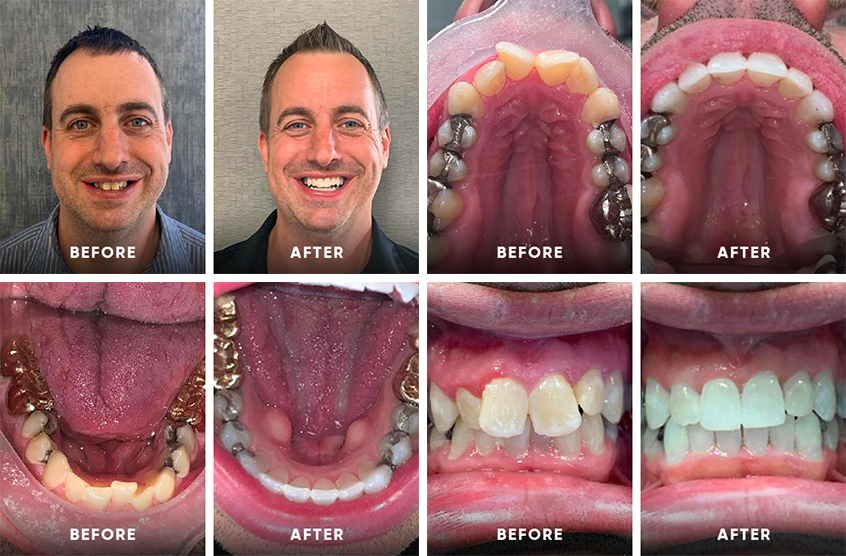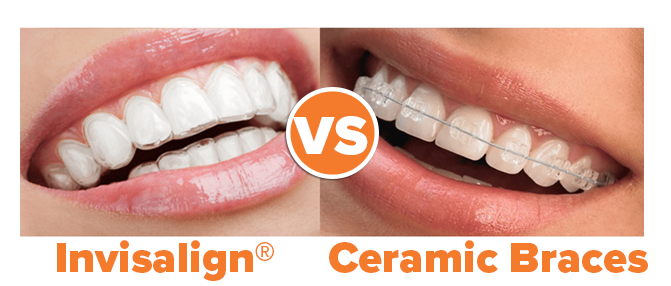Invisalign vs. Typical Dental braces: Which Option Is Right for You?
When considering orthodontic treatment, the option in between Invisalign and traditional dental braces presents a number of crucial variables that merit careful assessment. Invisalign uses a very discreet choice with detachable aligners, while traditional braces offer a much more noticeable yet efficient option for extreme imbalance.
Review of Therapy Alternatives

In comparison, conventional dental braces contain steel braces and wires that are bound to the teeth. This approach applies continual pressure over time to achieve positioning. While efficient for complex orthodontic problems, typical dental braces call for routine check outs for modifications and can posture challenges in preserving oral health as a result of the trouble of cleaning around brackets and wires.
Both options have their advantages, and the option usually pivots on specific dental conditions, lifestyle preferences, and patient compliance. Ultimately, speaking with an orthodontic expert is vital for establishing one of the most ideal therapy plan tailored to individual needs. Understanding the subtleties of each alternative can dramatically affect the total success of orthodontic treatment.
Visual Factors To Consider
A considerable aspect affecting the option in between Invisalign and standard braces is the aesthetic appeal each treatment offers. Invisalign aligners are crafted from clear plastic, making them virtually invisible when worn. This very discreet look is especially attracting teenagers and grownups who may really feel awkward concerning their orthodontic therapy. The ability to maintain an all-natural smile throughout the positioning process can considerably enhance the patient's self-confidence in social and expert settings.
On the other hand, traditional dental braces consist of metal braces and wires, which can be a lot more noticeable. While improvements in orthodontic technology have caused the development of smaller braces and tinted elastics, conventional dental braces still keep a more noticeable profile. For some people, the presence of braces may prevent them from looking for necessary treatment.
Eventually, the selection between Invisalign and conventional dental braces might depend upon personal preferences pertaining to aesthetics. Clients that focus on discernment frequently lean toward Invisalign, while those that are much less worried about presence may select typical braces. Comprehending the aesthetic effects of each option is essential for making a notified decision that lines up with one's way of life and choices.
Convenience and Convenience

In regards to ease, Invisalign aligners are detachable, enabling people to appreciate their preferred foods without restriction and maintain optimum oral hygiene. Cleaning and flossing are simplified, as the aligners can be taken out during these regimens, whereas traditional dental braces call for mindful steering around braces and cables.
In contrast, traditional dental braces require normal modifications, making them less hassle-free for those with hectic timetables. Generally, the comfort and ease of Invisalign make it an attractive choice for lots of individuals looking for orthodontic therapy.
Treatment Duration and Performance
While both Invisalign and conventional dental braces are efficient in correcting oral misalignments, the duration of therapy can differ dramatically between the 2 options. Generally, Invisalign therapy can take anywhere from 12 to 18 months, relying on the complexity of the instance. The clear aligners work by slowly shifting teeth right into their wanted positions, and normal follow-ups with an orthodontist aid guarantee progression remains on the right track.
On the other hand, typical braces typically call for a longer dedication, usually ranging from 18 months to 3 years. This is due to their fixed nature and using cords and braces, which can be extra effective for complicated situations and serious imbalances (Invisalign). The therapy performance of typical dental braces is well-documented, as they permit for specific changes and better control over tooth activity
Inevitably, the selection in between Invisalign and typical dental braces might depend upon both the expected treatment duration and the specific oral concerns handy. Consulting with an orthodontist is critical, as they can provide customized referrals based upon private requirements, making sure the picked approach straightens with wanted outcomes and timeframes.
Price Comparison and Insurance Coverage Choices
Expense plays a significant role in the decision-making procedure for individuals considering orthodontic therapy, whether choosing Invisalign or standard braces. Generally, the price learn the facts here now of Invisalign varieties from $3,000 to $8,000, while traditional dental braces normally cost in between $2,000 and $6,000. Aspects influencing these prices include the complexity of the case, the period of treatment, and geographical location.
Lots of oral insurance plans supply partial protection for orthodontic treatments, yet the specifics can vary commonly. Normally, conventional dental braces might be extra frequently covered by insurance coverage strategies contrasted to look at here now Invisalign, which some insurers categorize as a cosmetic procedure.
Furthermore, a number of orthodontic methods supply adaptable payment plans, making both treatment options much more easily accessible. Individuals need to ask about potential financing alternatives and discounts for ahead of time settlements. Evaluating the complete price, consisting of insurance policy advantages and settlement strategies, is crucial for making an educated choice that straightens with both visual preferences and budget considerations.

Final Thought
In summary, the selection in between Invisalign and traditional dental braces rests on numerous aspects, including visual preferences, convenience, treatment period, and expense. Invisalign offers a very discreet, detachable choice that facilitates dental hygiene and nutritional flexibility, while traditional dental braces may be preferable for complex dental issues and usually come at a reduced cost factor. Ultimately, examination with an orthodontist is necessary to examine specific circumstances and figure out one of the most suitable therapy alternative for achieving ideal oral placement.
When thinking about orthodontic therapy, the selection between Invisalign and conventional dental braces offers several essential aspects that warrant mindful assessment.Comparing Invisalign and typical dental braces discloses distinct treatment options for orthodontic improvement.While both Invisalign and conventional dental braces are effective in correcting oral imbalances, the period of therapy can vary dramatically in between the 2 options.Cost plays a significant role in the decision-making procedure for people taking into consideration orthodontic therapy, whether deciding for Invisalign or typical dental braces.In recap, the option between Invisalign and traditional braces pivots on numerous aspects, including aesthetic choices, convenience, therapy duration, and cost.